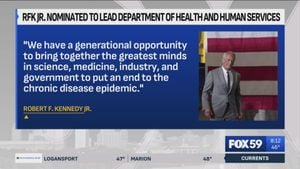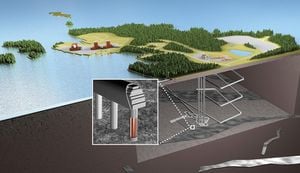Recent discussions around carbon capture and storage (CCS) technologies reveal the growing interest and urgency surrounding engineered carbon removal. The global climate crisis has ignited debates focused on various strategies to pull carbon dioxide (CO2) from the atmosphere, mitigate the impacts of climate change, and sustain energy infrastructure. Advances from companies like Occidental Petroleum and California Resources Corporation (CRC) demonstrate concrete steps taken to embed these technologies within the broader move toward zero-emissions energy systems.
Occidental Petroleum has significantly invested in the direct-air capture (DAC) sector, acquiring Carbon Engineering for $1.1 billion. This acquisition aims to develop carbon capture networks, which are anticipated to include approximately 100 separate plants. The focus is not merely on capturing CO2; the methodology employed could transform captured gases for beneficial uses, such as manufacturing concrete or producing aviation fuel. The industry is alive with optimism about the role of CCS, largely fueled by recent federal initiatives.
Following the Biden administration's recent embrace of DAC technology, the stage is set for substantial expansion. Under this backdrop, the United States already boasts 5,000 miles of CO2 pipelines, with additional lines under construction across various projects, including those spearheaded by Summit Carbon Solutions and Navigator CO2 Ventures. The potential expansion of this pipeline system could see up to 65,000 miles operational, representing both opportunity and concern.
One glaring issue previously highlighted arose from the Satartia incident, where CO2 pipeline failure led to acute public health risks. Safety remains peripheral to regulatory pushes, as stakeholders express trepidation over what such vast expansions could mean for public safety and environmental health. Indeed, discussions have centered on whether such rapid approval of new CO2 pipelines is prudent or excessively ambitious without rigorous safety checks.
According to analyses by the Congressional Research Service (CRS), CO2 pipelines are considered integral to effective CCS solutions aimed at combating the current climate emergency. Yet, even amid growing support, nonprofit safety organizations like the Pipeline Safety Trust are raising flags about the sufficiency of existing safety protocols.
Globally, the talk of investment is enormous too. A recent study by Wood Mackenzie indicates the U.S. should expect annual climate investment costs totaling upwards of $2.7 trillion to stave off significant temperature rises by mid-century. The forecast cites fossil fuels will still hold undeniable roles but predictably decrease as cleaner energies ascend. Not just limited to emissions capture, these funds will also branch out to infrastructure and energy transition technologies.
Besides the gigantic investment needs, the expectations set forth by the current administration are equally lofty. U.S. Department of Energy (DOE) Secretary Jennifer Granholm branded the current initiatives as “once-in-a-generation investments,” laying the groundwork for what could potentially become one of the largest engineered carbon removal industries of all time. Granholm headlines significant projects, including DAC hubs slated across major energy-producing regions. These facilities aim to capture over 2 million metric tons of CO2 annually.
The projected demand for carbon reduction is staggering. Critics voice skepticism, pondering the feasibility of achieving net-zero emissions by 2050 without overwhelming reliance on advanced removal technologies. The American Energy Exchange sees DAC and carbon utilization as pivotal solutions. It remains to be seen how public opinion will shape these partnerships as various stakeholders engage with the communities affected by these developments.
The interaction of commercial interests with environmental imperatives adds another layer of complexity. Local communities and activists express eagerness to understand what these changes will mean for their air and water security. Secretary Granholm committed to community engagement within the earlier proposed projects to address local fears and aspirations.
Concrete steps taken at the state level have begun to echo the ambitious goals set forth federally. Project Cypress, underway with Battelle Labs and supported by firms like Climeworks, aims to erase over 1 million tons of CO2 per year via industrial-scale DAC solutions set against geological storage backdrops. The anticipated job creation and economic revitalization are key selling points for backers of these initiatives.
With the Biden administration’s ambitious climate action plans hanging heavy over the nation, the interplay of safety, investment, and public engagement will dictate the progress or setbacks experienced by carbon capture and removal technologies. The road to significant reductions (if achievable) will not be smooth, but the narrative of engineered removals is beginning to solidify as more than just theoretical discussions.
Overall, as momentum appears to gather, the question looms: Will the balance between economic growth, environmental justice, and safety concerns be struck? For now, discussions on carbon capture technologies paint a picture of cautious optimism and potential challenges on the horizon.



